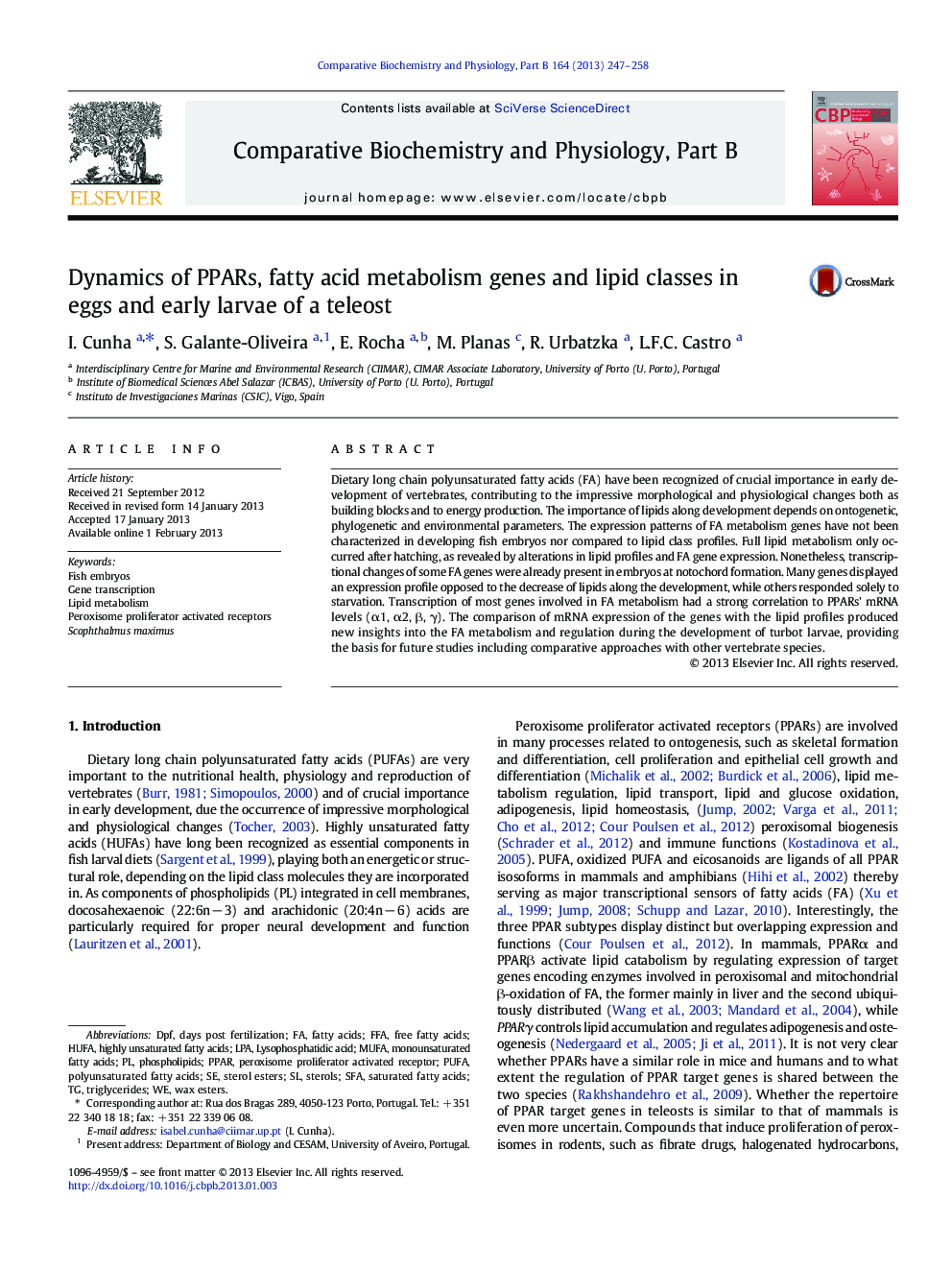| Article ID | Journal | Published Year | Pages | File Type |
|---|---|---|---|---|
| 10820425 | Comparative Biochemistry and Physiology Part B: Biochemistry and Molecular Biology | 2013 | 12 Pages |
Abstract
Dietary long chain polyunsaturated fatty acids (FA) have been recognized of crucial importance in early development of vertebrates, contributing to the impressive morphological and physiological changes both as building blocks and to energy production. The importance of lipids along development depends on ontogenetic, phylogenetic and environmental parameters. The expression patterns of FA metabolism genes have not been characterized in developing fish embryos nor compared to lipid class profiles. Full lipid metabolism only occurred after hatching, as revealed by alterations in lipid profiles and FA gene expression. Nonetheless, transcriptional changes of some FA genes were already present in embryos at notochord formation. Many genes displayed an expression profile opposed to the decrease of lipids along the development, while others responded solely to starvation. Transcription of most genes involved in FA metabolism had a strong correlation to PPARs' mRNA levels (α1, α2, β, γ). The comparison of mRNA expression of the genes with the lipid profiles produced new insights into the FA metabolism and regulation during the development of turbot larvae, providing the basis for future studies including comparative approaches with other vertebrate species.
Keywords
Scophthalmus maximusHUFADPFLPAFFAPPARSFAMUFAWax esterssterol estersSterolslysophosphatidic acidPolyunsaturated fatty acidsPUFAFatty acidsFree fatty acidssaturated fatty acidsHighly unsaturated fatty acidsmonounsaturated fatty acidsdays post fertilizationTriglyceridesFish embryosGene transcriptionPhospholipidsLipid metabolismPeroxisome proliferator activated receptorperoxisome proliferator activated receptors
Related Topics
Life Sciences
Biochemistry, Genetics and Molecular Biology
Biochemistry
Authors
I. Cunha, S. Galante-Oliveira, E. Rocha, M. Planas, R. Urbatzka, L.F.C. Castro,
